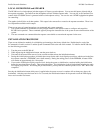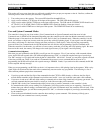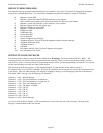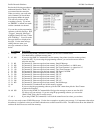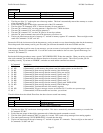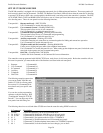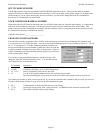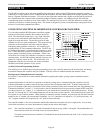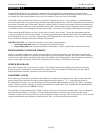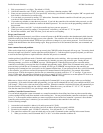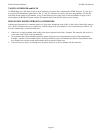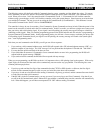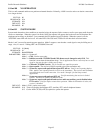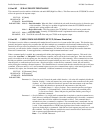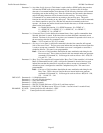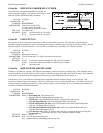
Pacific Research Solutions RI-300e User Manual
Page 39
SECTION 11 PROGRAMMING
Customizing the RI-300 for your application is performed through programming. Programming is done with (System
Commands) S-Commands and is performed over the air, over the telephone or with the programming software. Not only can
you change any of the system perimeters, but you can also change or create your own user commands.
The RI-300 contains powerful tools in which to create User Commands and macros. User commands are commands that the
user of the repeater will send to perform major functions, like making telephone calls. The user commands themselves will call
macros that can contain many S-Commands. However, with the power to customize your repeater comes the responsibility of
managing the memory where your custom commands will be stored. When creating new user commands, macros or messages,
care should be taken to avoid damaging other data in the memory. See section 13 for additional information on this subject.
When controlling the RI-300, you are always in one of the two modes, never in both. To enter the programming mode the
correct password (section 11) must be executed. To exit the programming mode and return back to the User Command mode
the S-Command 69 0 or 69 1 is executed. Programming or S-Command mode is often referred to as the controller “unlocked
mode” and the user command mode as the controller “locked mode”.
IMPORTANT NOTE: At all times the controller is in one of two command modes:
1. Normal operating mode where User Commands are functional (Locked).
2. Programming mode where System Commands (S-Commands) are used to customize the controller (Unlocked).
PROGRAMMING COMMAND FORMAT
Syntax is a common computer term, which means the format of a statement, command, or data that must be organized and
entered such that the computer can recognize or understand what you are telling the computer. The syntax of an S-Command
consists of a two digit number ranging from 00 to 99, which identifies the S-Command itself. The S-Command is followed by
data of various types and amounts. Each of the S-Commands listed in section 12 will detail its own syntax.
SPEECH READ BACK
Most all S-Command data can be read back in speech. This read back occurs when modifying non sensitive system data.
Passwords and user commands do not automatically read back. Nearly all commands will read back system data without
making modifications when the command is sent in the read back form.
PASSWORD ACCESS
Prior to the access of any System Command or S-Commands, you must enter the valid password. Upon receipt of the valid
password the RI-300 controller will return an acknowledgment message (speech “U” “L”). At that time any system or
S-Command may be issued. Any valid S-Command will also return the acknowledgment message (CW “OK”) or sometimes
called a “function complete” telemetry or speech of the modified S-Command data. If the controller did not understand the S-
Command you will get a speech “ERROR” message.
The controller comes programmed with “123456” as the password to access the system command mode. You can change the
password within the range of 1 to 6 digits. To reduce additional problems, check your new password with the system
commands to make sure it does not look like a system command. Example, do not use “010” as the password. If you are in the
system command mode and accidentally send the password “010”, you will turn off the system instead.



